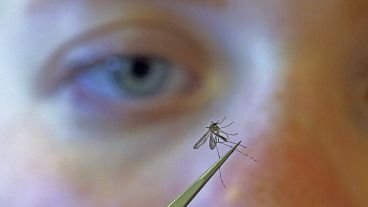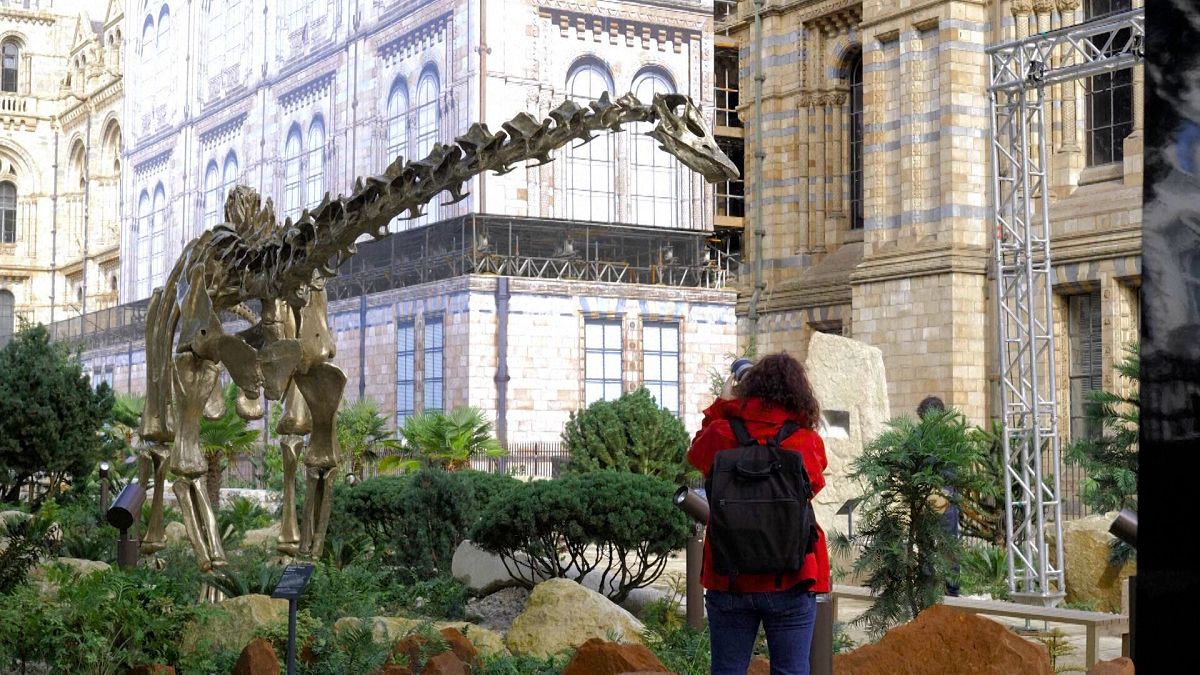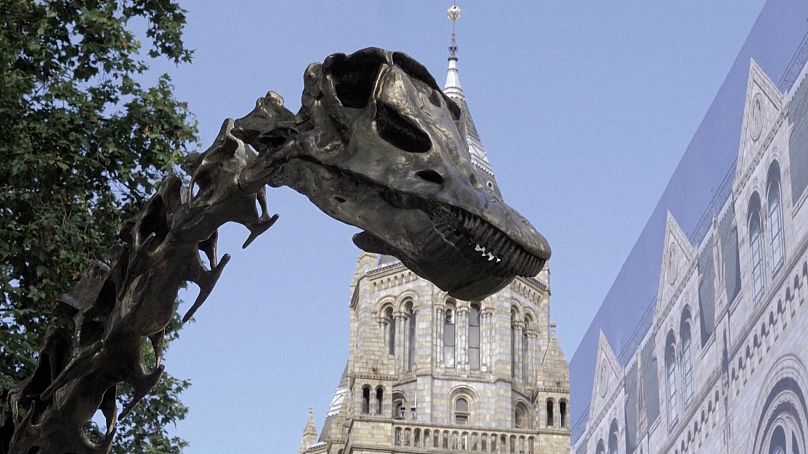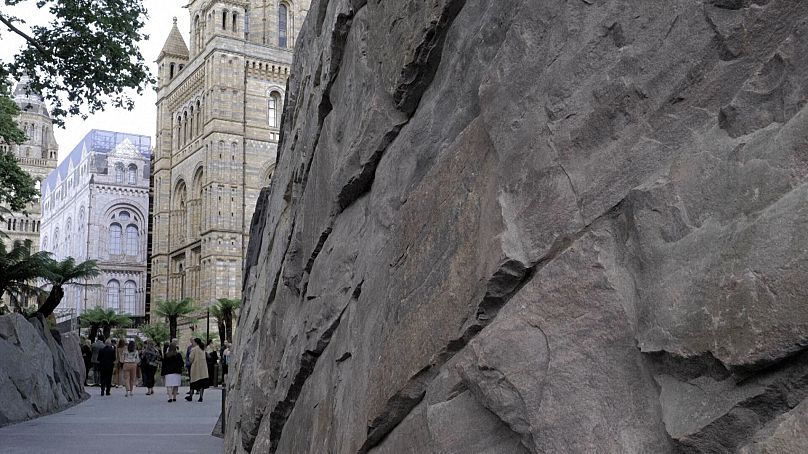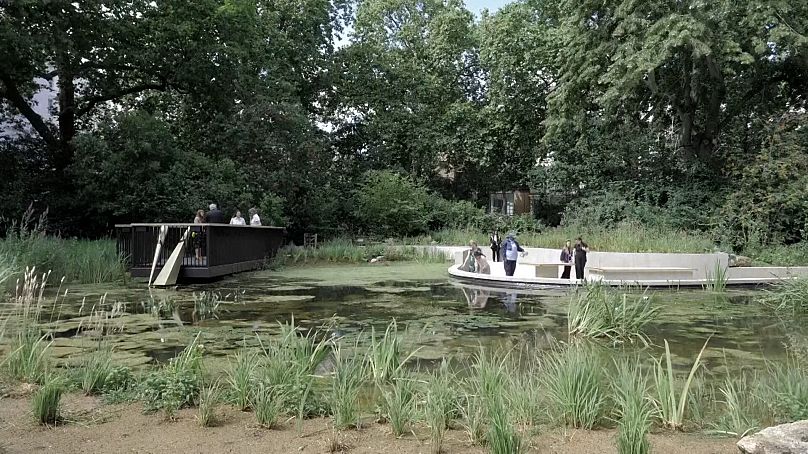Dippy the diplodocus is back at London's Natural History Museum - only she's now called Fern and she's moved to prime position in the museum's revamped gardens.
The Natural History Museum in London is set to open its newly revamped gardens, a five-year project costing £25 million (€29.7m), located just outside its main entrance.
Among the highlights of the gardens is Fern, a magnificent 26-metre-long bronze cast of a Dippy the diplodocus, the museum’s much-loved centrepiece and who is currently on a national tour.
"It's a bronze replica of Dippy, the diplodocus who used to grace the Natural History Museum Central hall," says Professor Susannah Maidment, a palaeontologist at the Natural History Museum.
Dippy is very much an indoor dinosaur, but in bronze Fern will brave the elements and is now a permanent fixture at the museum.
“The diplodocus is a big herbivore. This one is 22m long, and it spans four metres at the hips. So it's one of the biggest animals ever to walk the earth and it lived in the upper Jurassic period about 150 million years ago," says Maidment.
The Jurassic landscape surrounding Fern is one of two new gardens that now occupy the five acres of land surrounding the museum.
The first is the Evolution Garden where visitors will walk through 2.7 billion years of the history of our planet. It is a timeline of the rock formations which have formed through the Earth’s violent past and opens out into a wider green space.
Palaeontologist Dr Paul Kenrick, the principle researcher at the Natural History Museum says: “Visitors will be walking through geological time, starting with the oldest rocks in the UK, which are over 2.7 billion years old. And as we walk through the garden we come to the Cambrian period and then the scale of the garden is calibrated - one metre equals five million years. So you'll be walking at that sort of pace through the garden experiencing geological time kind of fast forward.”
The rock wall opens up from the entrance to the tunnel leading to South Kensington tube and gives visitors a good impression of what they are in store for.
Benches and stones are laid around the gardens to create moments for visitors, or locals, to sit and escape some of the hustle of this busy part of London.
A nature discovery garden is nestled at the side of the museum with wildflowers and ponds representing different habitats and the biodiversity of the UK. Newts, frogs, dragonflies and mandarin ducks have already been spotted in the garden, as well as a family of foxes.
The garden will form part of the Museum’s Urban Nature Project with teams of scientists monitoring changes in the urban natural landscape.
Visitors will be able to enter the gardens and meet Fern from 18 July 2024.



